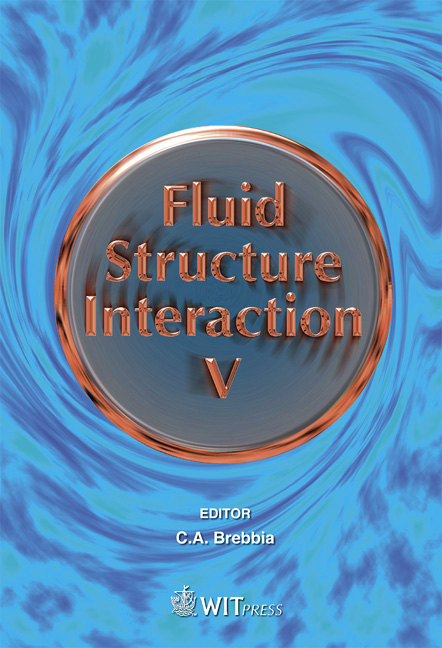A First Step To Fluid-Structure Interaction Inside Solid Propellant Rocket Motors
Price
Free (open access)
Transaction
Volume
105
Pages
12
Page Range
149 - 160
Published
2009
Size
921 kb
Paper DOI
10.2495/FSI090141
Copyright
WIT Press
Author(s)
S. Cerqueira, F. Feyel & G. Avalon
Abstract
Self sustained oscillations in Solid Propellant Rocket Motors result from an aeroacoustic phenomenon involving interaction between vortex shedding and acoustics of the chamber. An experimental investigation has been carried out with a cold gas apparatus for acoustic oscillations sustained by vortex shedding. Furthermore, Fluid-Structure interactions have been shown to be of importance when studying pressure oscillations inside Solid Propellant Rocket Motors. Numerical results are compared to preliminary tests undertaken with the use of a non-intrusive measurement technique allowing both displacement and frequency measurements of flexible inhibitors. Keywords: Solid Rocket PropellantMotors, Fluid-Structure, numerical simulation, vortex shedding. 1 Introduction Discovered in the late 1930s, [1], unsteady motions in Solid Propellant Rockets were the first examples discovered of combustion instabilities in propulsion systems. Since that time, extensive work has been done on pressure oscillations motivated, for instance, by low frequency oscillations in the boosters of the European launcher Ariane 5 [2]. Conveniently assembled with segmented grains, large Solid Propellant Rocket Motors (SPRM) have interfaces coated with an inert, slow burning material (named inhibitors). As the propellant burns radially during the firing, the inhibitors protrude into the flow in the form of annular rings giving rise to unstable shear layers. First suggested by Flandro and Jacobs in 1973, [3], and by Flandro twelve years later in an extension of his previous analysis, [4], periodic vortex shedding may induce pressure oscillations. According to Flandro’s work, vortex shedding from
Keywords
Solid Rocket PropellantMotors, Fluid-Structure, numerical simulation, vortex shedding.





